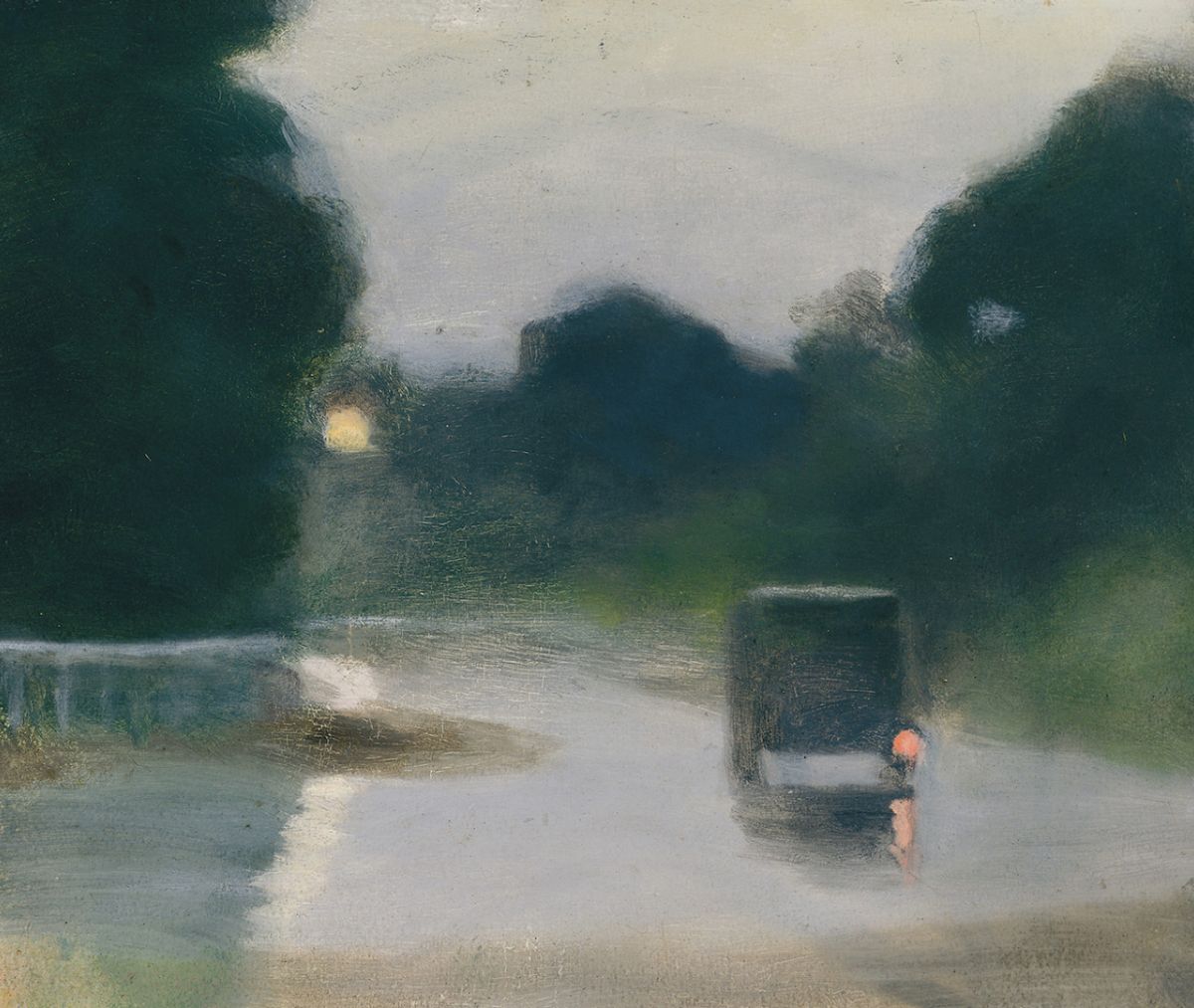Reflection No. 1
During this period of temporary closure, we will invite members of the CAM community to write brief reflections on aspects of CAM art and museum collections, which we will share on a regular basis.
This series, entitled Reflections, commences below, with an inspired coupling: one of CAM's most loved artists, Clarice Beckett, and brilliant art historian Helen McDonald, who has elected to write about Wet Evening c1927. This work currently hangs in the Higgins Gallery in the exhibition Janina Green in Conversation with the Collection. Here, the sombre mood of Beckett’s small dark painting resonates formally and in spirit with Green’s equally bleak, hand-coloured photographic study of a massive road train.

Reflections is part of an experiment, indeed a commitment from the Castlemaine Art Museum, to make this magnificent resource relevant and uplifting, even when our doors are closed.
We are working behind the scenes to care for the collection and conserve the glorious Percy Meldrum building, and will share our work with you over this period of social distancing.
We hope to give meaning to the cry that art is good for our wellbeing. For me, curating is such a spatial experience, and here is our challenge: to make meaningful digital experiences. For example, think of the intriguing long vista whilst standing in the McKillop Gallery (reception) and looking down to the Experimental Print Prize in the Stoneman Gallery and seeing Yoshe Gillespie’s lithograph, Transitory, 2019, straddling floor and wall. How this work entices your journey through the space! Or you might recall seeing Janina Green’s monumental photograph of an orange Chinese pot, from the Whitchell Gallery? Particularly moving is the experience of looking across through the vitrine with the fabulous Indigenous pokerwork sculpture of a kangaroo, to Leah King Smith’s heart-wrenching photograph of William Barak and his hound.
Our plan is to bring beautiful, challenging and intriguing works and commentary to your table. We will be sending more frequent newsletters, reflections on the collection. Excitingly, we also hope to publish digital education projects designed for upper primary students to explore with their families, and upper secondary projects relevant to the VCE syllabus. Young people will be able to upload their images and writing to the CAM website.
During this period we are refreshing exhibitions and, in glorious confidence about the future, we have installed a magnificent new exhibition in the Sinclair Gallery and will be bringing you more about this exhibition shortly.
We invite you to share our communications with friends and family.
I acknowledge Helen McDonald, Jenny Long, Brodie Ellis and Stephanie Holt.
If you have ideas you wish to suggest for how CAM can contribute to all our lives at this time, please contact us.
Naomi Cass

Wet Evening, 1927: Why does everyone love Clarice Beckett?
Helen McDonald
Like a shy bushland creature, Clarice Beckett creeps into the twilight with her paints and easel. It’s unclear whether she’s hiding from a predator or stalking her prey. The dim rain-swept scene that emerges before her is half-formed, inchoate in a way, yet it glistens and teems with crepuscular life. She squints towards the silver sky and her senses are on high alert as she registers the proximity of things, in terms of dark against light. Poised between her body and the world beyond, her viewing frame encases blackish-green arboreal and architectural shapes that loom and thicken, merging along the horizon, where a wide and slippery, silver road disappears around a bend. Knowing well the power of evocation, Beckett pulls back for a soft focus effect. William Turner, James Whistler and the photographers of modern life come to mind. A misty sulphur lamp lights the way for a square grey car, which, joined to its dissolving reflection, has only one tail light.
It is 1927 and Clarice Beckett is forty years old, unmarried and living at home in Beaumaris, with her ailing parents. Restless and ambitious, she wanders the streets and beaches to paint, at all hours, especially the twilight hours, and in all weather conditions. Little does she know her curious lifestyle will bring about her early demise, from pneumonia. And little does she know how admired she and her art will become.
Clarice Beckett fits, perfectly, the paradigm of the overlooked and forgotten genius who dies young—a woman artist whose independent and unique vision was derided by contemporaneous critics. She was a more intuitive painter of the environment than Hans Heysen and his heroic landscape tradition. Her tonalism is more minimal, abstract and advanced than that of fellow ‘misty moderns’, belonging to Max Meldrum’s school. Her plein air subject matter, representing outdoor life in early twentieth century Melbourne—the country, the suburbs and the city—sets her apart from Margaret Preston and the other Australian Women Modernists who, although modern, were confined to the domestic sphere. Beckett’s dusky, moody ‘landscapes’ anticipate gritty 1930s crime movies, film noir, Bill Henson’s photography, the paintings of Louise Hearman, and those of Rick Amor.
After her death, the majority of Beckett’s works were left to rot in a shed and it wasn’t until the 1970s that Rosalind Hollinrake located a number of remaining, intact works by Beckett. An inspired feminist art historian, Hollinrake recognised Beckett’s brilliance and, in a monograph (1979) and later an exhibition (1999), introduced the artist’s oeuvre to a new and expanding audience of adoring fans.
April 2020